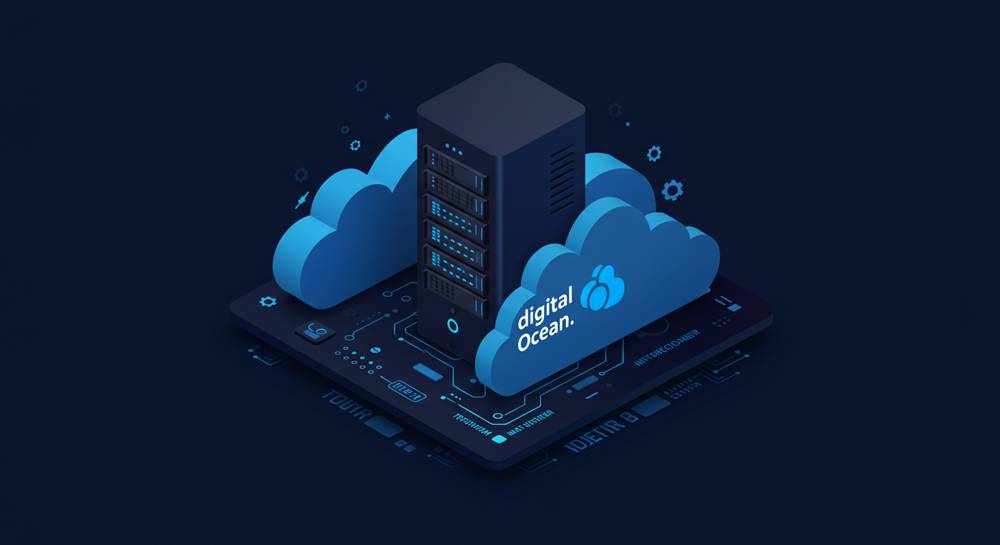- Start Learning Digital Ocean
- Creating an Account
- Droplets
- Kubernetes
-
Storage Services
- Storage Services Overview
- Spaces (Object Storage)
- Creating First Space
- Uploading and Managing Objects
- Accessing and Sharing Objects
- Integrating Spaces with Applications
- Using Spaces with CDN (Content Delivery Network)
- Volumes (Block Storage)
- Creating First Volume
- Attaching Volumes to Droplets
- Managing Volumes
- Using Volumes for Data Persistence
- Backup and Snapshot Options for Digital Ocean Volumes
- Managed Databases
- Networking Services
- DevOps Services
- Cost Management and Pricing
Start Learning Digital Ocean
In this article, you will receive comprehensive training on Digital Ocean, a powerful platform that caters to developers looking to deploy, manage, and scale applications efficiently. Whether you are a seasoned developer or an intermediate user seeking to enhance your cloud infrastructure skills, this guide will provide you with the insights needed to leverage Digital Ocean effectively.
Introduction to Digital Ocean
Digital Ocean is a cloud infrastructure provider that offers developers a straightforward way to deploy and scale applications that run simultaneously on multiple computers. Unlike many of its competitors, Digital Ocean focuses on simplicity and user-friendliness, making it an ideal choice for developers who want to avoid the complexities that often accompany cloud services.
Founded in 2011, Digital Ocean has grown significantly, becoming a go-to solution for many startups and established businesses. Its services include scalable compute instances, managed databases, Kubernetes, and storage solutions. One of the main attractions of Digital Ocean is its Droplets, which are virtual private servers (VPS) that provide developers with the flexibility to create and manage virtual machines with ease.
Key Features of Digital Ocean
- User-Friendly Interface: The Digital Ocean dashboard is intuitive and easy to navigate, providing users with a streamlined experience when managing their resources.
- Scalability: Digital Ocean allows users to scale their applications effortlessly, making it suitable for projects of any size.
- Cost-Effective Pricing: With its transparent and predictable pricing model, Digital Ocean enables developers to budget their cloud expenses effectively.
- Rich Ecosystem: Digital Ocean has a vast marketplace with pre-configured applications and software stacks, allowing developers to quickly set up environments tailored to their needs.
When starting with Digital Ocean, understanding the platform's architecture and services is crucial. Familiarizing yourself with concepts like Droplets, Block Storage, and Managed Databases will pave the way for seamless deployments and efficient management of your applications.
Deploying First Application on Digital Ocean
Now that you have a foundational understanding of Digital Ocean, let's dive into deploying your first application. For this tutorial, we will deploy a simple web application using Node.js on a Droplet. This process will help you grasp the essential steps involved in launching an application on Digital Ocean.
Step 1: Create a Digital Ocean Account
First, you need to create an account on Digital Ocean. Visit the Digital Ocean website and sign up. You may need to enter your payment information to access all features, but Digital Ocean often offers credits for new users.
Step 2: Create a Droplet
Once you have an account, follow these steps to create your first Droplet:
ssh-keygen -t rsa -b 4096Step 3: Access Your Droplet
After creating your Droplet, you will receive an IP address. Use this IP address to SSH into your Droplet. Open your terminal and run:
ssh root@your_droplet_ipReplace your_droplet_ip with the actual IP address of your Droplet.
Step 4: Set Up Node.js
Once you are logged into your Droplet, you need to install Node.js and npm (Node Package Manager). Execute the following commands:
sudo apt update
sudo apt install nodejs npmTo verify the installation, check the versions:
node -v
npm -vStep 5: Create a Simple Web Application
Now, let’s create a simple web application. Create a new directory for your application and navigate into it:
mkdir myapp
cd myappThen, initialize a new Node.js project:
npm init -yNext, install the Express framework:
npm install expressCreate a file named app.js and add the following code:
const express = require('express');
const app = express();
const PORT = process.env.PORT || 3000;
app.get('/', (req, res) => {
res.send('Hello World!');
});
app.listen(PORT, () => {
console.log(`Server is running on http://localhost:${PORT}`);
});Step 6: Run Your Application
To run your application, execute the following command:
node app.jsYour application should now be running on port 3000. You can test it by navigating to http://your_droplet_ip:3000 in your web browser. You should see "Hello World!" displayed on the page.
Step 7: (Optional) Configure a Domain and HTTPS
If you want to make your application accessible via a domain name and secure it with HTTPS, you can set up a domain and use Let’s Encrypt for SSL. This step is not mandatory but is advisable for production applications.
sudo apt install certbotsudo certbot certonly --standalone -d your_domainNow your application will be accessible via HTTPS.
Summary
In this article, we explored the fundamentals of Digital Ocean and walked through the process of deploying a simple Node.js application on a Droplet. By leveraging Digital Ocean's intuitive interface and robust infrastructure, developers can easily launch and manage applications in the cloud.
To recap, we covered the following key points:
- Creating a Digital Ocean account and setting up your first Droplet.
- Installing Node.js and creating a simple web application using Express.
- Running your application and optionally configuring a domain and SSL for enhanced security.
As you continue your journey with Digital Ocean, consider exploring additional services like Managed Databases, Kubernetes, and App Platform to further enhance your cloud capabilities.
Last Update: 20 Jan, 2025

